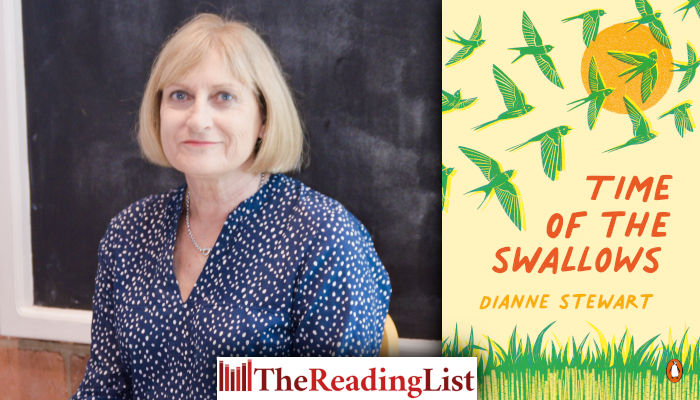Dianne Stewart on how to journal your way to a novel
More about the book!

Journaling is an accessible way for writers to hone their craft and keep track of details while writing a book, says Dianne Stewart, author and recipient of SA Children’s Laureate Award for her lifelong contribution to children’s literature.
‘Journaling was invaluable in helping me keep track of details – especially when working with 175 pages of novel!’
Acclaimed British author Virginia Woolf once wrote: ‘The habit of writing for my eye is good practice. It loosens the ligaments.’ She was referring to her habit of journal writing. Woolf, who became dedicated to journal-writing when she was 33 years old, saw the creative advantages of keeping a diary and maintained that it was essential to ‘honing one’s writing style.’
Like Woolf, many authors keep a journal for jotting down thoughts and ideas, and it can be an invaluable part of the writing process. For many years, the leather-bound notebook was the journal of choice for writers such as Ernest Hemingway and Bruce Chatwin. In his 1987 book, The Songlines, Bruce Chatwin wrote, ‘With the obsessive neatness that goes with the beginning of a project, I made three neat stacks of my ‘Paris’ notebooks. In France, these notebooks are known as carnets moleskines: ‘moleskine’, in this case, being its black oilcloth binding. Each time I went to Paris, I would buy a fresh supply […]’
But for me, one of the most valuable journals is The Diary of a Young Girl by Anne Frank. It documents first-hand Anne’s experiences during the Holocaust, when she and her family hid in a secret annex above an Amsterdam warehouse. In one of her journal entries, Anne wrote: ‘Writing in a diary is a really strange experience for someone like me. Not only because I’ve never written anything before, but also because it seems to me that later on, neither I nor anyone else will be interested in the musings of a thirteen-year-old schoolgirl. Oh well, it doesn’t matter. I feel like writing.’ If only Anne had known the impact her diary would have – in 1947, two years after her death, it was published, and to this day, its publication plays a vital role in the history of Holocaust memory.
The benefits of keeping a journal are plentiful. Firstly, it contains the writer’s completely unaltered voice.
By the time a piece of writing has moved through the hands of editors, it has been written and rewritten multiple times, and sometimes moved quite far from its original intention.
Secondly, it serves as a seedbed for future writing projects. Alexandra Johnson, author of Leaving a Trace: On Keeping a Journal, said that ‘The secret of keeping a journal is seeing it as a draft, a stepping-stone, a process.’
When writing my young adult novel, Time of the Swallows, my journal was an A5 black hardcover exercise book, covered in wrapping paper with pictures of cowrie shells on it and a sturdy plastic cover. In it, I crafted character sketches, occasionally even illustrating them with photos cut from a magazine. This method was invaluable in helping me keep track of details – especially when working with 175 pages of my young adult novel!
At other times, my journal documented specifically the life of Anele, one of my main characters in the book. A journal entry reads: ‘I stared vacantly at the bubbles quickly disappearing on the surface of the water. Languidly, I swooshed the coffee mugs around in the sink … before putting them on the dish rack to dry.’ Although this piece didn’t make it to the novel, it did serve to remind me that Anele was very helpful around the house, stepping in whenever her busy parents needed her.
Besides my notebook for writing projects, I also keep a journal that travels with me whenever I go away. When recreating a place sometime afterwards, it can be a great help to have a journal to jog your memory on the details. I have a sneaking suspicion that Bruce Chatwin, while writing In Patagonia – the book that launched his career as a writer and won him the EM Forster award – relied heavily on journal entries he had made during his six months in the South American region.
As a writer, keeping a journal is the most accessible way to hone your craft, and a valuable tool on the journey of writing a novel.
Dianne’s latest novel, Time of the Swallows, is out now.
~~~
This article was originally published in The Penguin Post, a magazine about books for book lovers from Penguin Random House South Africa.
Categories Fiction South Africa
Tags Dianne Stewart Penguin Random House SA The Penguin Post Time of the Swallows
